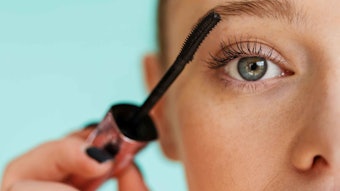Only a short time ago, the industry was abuzz with reports linking the toxic trio of formaldehyde, dibutyl phthalate (DBP) and toluene to cancer, reproductive toxicity and asthma. However, it seems the bad press storm surrounding the safety of these ingredients has passed since most nail polish manufacturers have reformulated to omit these materials; and now, formulators can focus on the horizon for new innovations in nail polish.
Wet N Wild, a mass-market cosmetic brand from Markwins North America, initiated the reformulation of its nail polishes in 2003–2004, or what Anita Jennison, marketing director for the brand terms the three-free movement. Jennison and Amy Chang, R&D chemist for the brand, are the main players behind the R&D and marketing of the brand’s nail polishes and treatments.
Replacing the ‘Toxic Trio’
According to Chang, staying on top of ingredient safety means following only credible industry sources, including reports from the Personal Care Products Council and the US Food and Drug Administration (FDA), which regulates nail care as part of the Federal Food, Drug and Cosmetic Act.1 She explained that once the replacement of formaldehyde, dibutyl phthalate (DBT) and toluene was deemed necessary, the road to reformulation was challenging. “It was difficult to replace these nail polish ingredients, which worked so well with other products.” Chang added that they only had approximately 18 months of lead time to replace them.
DBP is a plasticizer that makes the plastic in nail polish soft and flexible. According to Chang, it forms a film on the nail to give it flexibility and adhesion. “We tried many different materials to replace DBP, and we identified a material that was being used as a plasticizer for food containers—acetyl tributyl citrate. So we tested it [and found] that it replaces DBP well.”
To address toluene, a solvent that provides quick dry time, the company took another approach. “We eliminated [toluene] completely and reproportioned the other solvents in the formula including alcohol, butyl acetate and ethyl acetate to maximize the ratio for a desirable dry time,” said Chang.
Reformulating nail polishes without formaldehyde presented an issue for Chang, as tosylamide/formaldehyde resin typically is used to provide the lasting color that consumers desire. “Formaldehyde resin contains traces of formaldehyde but we wanted to be completely free of formaldehyde, so we replaced it with epoxy resins and other copolymer systems,” said Chang.
Although reformulating Wet N Wild nail polishes was not easy, both Jennison and Chang note that eliminating these ingredients has not decreased the efficacy of the products. “More advanced polymer technologies are predicting the future of nail polish technology,” said Jennison.
She added that rather than reformulating to replace these materials, some companies have instead created natural or water-based nail products. However, Jennison does not find water-based polishes to provide what her consumer is seeking. “The fact of the matter is, 100% water-based nail polishes do not last. They peel and they do not provide the durability that today’s consumer is looking for.”
A Bright Future for Nails
As noted, the company is applying new polymer technologies to develop a line of nail polishes. “We’re coming out with a nail polish in 2010 that utilizes a new polymer system to adhere pigments to the nail without formaldehyde.
In addition, the new line is formulated with a patented mineral blend to deliver nutrients to the nail,” said Jennison. In addition to providing nail nutrition, Jennison notes that nail polishes are becoming more breathable. Chang adds that she has seen a rise in encapsulation technology for nail polishes to deliver time-released color. She plans to use this encapsulation technology to release nutrients to the nail bed in a time-regulated formula.
For further inspiration, Chang looks to the automobile industry. “I am interested in color-morphing pigments, where the color changes based on the angle you look at it, giving a prism or rainbow effect,” said Chang.
Meanwhile, Jennison looks forward to the integration of art into nail polishes. “We often talk to our associates in China and Japan, where stucco and [other forms of] nail art are of high interest. We have also seen trends in metallic pigments,” said Jennison.
Chang concluded there are three elements necessary for a successful nail polish launch—technology, marketing and regulation. When these elements are combined, success results.
References
1. US Food and Drug Administration, Nail Care Products, www.fda.gov/Cosmetics/ProductandIngredientSafety/ProductInformation/ucm127068.htm (accessed on Nov 23, 2009)










